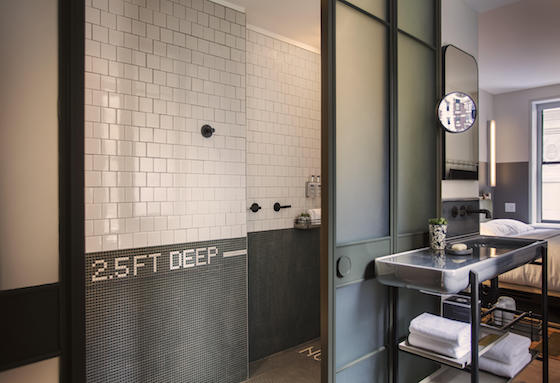The Toronto firm of Yabu Pushelberg frequently designs what partner George Yabu calls “the best of the best of the top of the market”: Luxury in hotels and retail, including a yacht and a private jet or two. While they have tended to avoid “the big, wide middle,” Yabu says the 612-room Moxy Times Square offered some absorbing creative challenges.
The choice of designer “was very instrumental in terms of what we thought of the brand,” Mitchell Hochberg told HOTELS Editor in Chief Jeff Weinstein earlier this year. Hochberg is president of New York real estate investor and developer Lightstone, which owns the Moxy and is on track to open three more in the city (next up is a 350-key version opening in May in the NoMad district).
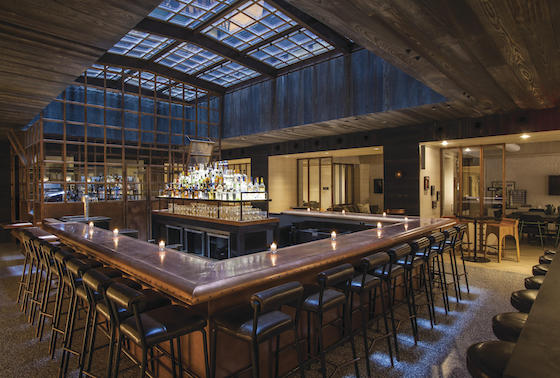
With no doorman, no room service and no spa, Moxy offers five F&B experiences on a “select-service chassis,” he says. Rates at the hotel, whose building dates to 1906, start at US$139. The rooms have nine types, varying from 120 to 350 square feet – a tight fit, on a tight budget, even with redevelopment totaling about US$400 million. Stonehill & Taylor were the architects.
Hochberg says Lightstone had been considering how to do a more affordable hotel in New York City and in 2013 started a conversation with Marriott International about bringing a “more American-friendly version” of its Moxy, which had opened in Europe, to the U.S. Yabu Pushelberg’s design is the basis of the brand standards, Hochberg says. The result opened in September.
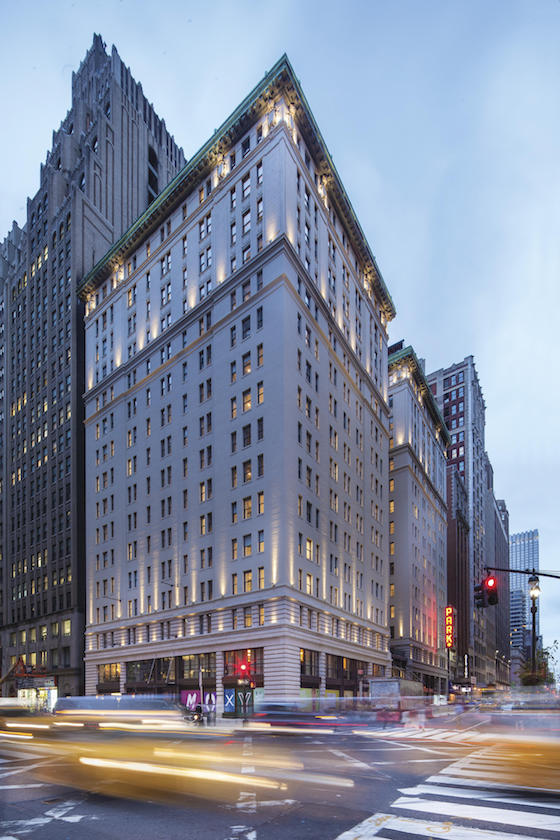
Design challenges
There were two challenges: “One, of course, is the size of the rooms,” says Yabu, who describes the aesthetic as urban camping – cozy rather than claustrophobic. “It’s the overall aesthetic of emotional, atmospheric comfort in the rooms that you wouldn’t find in, say, a capsule hotel.” That meant choosing materials and sizing them carefully – vanities were mounted on open frames rather than millwork and had narrow tops with room for toiletries.
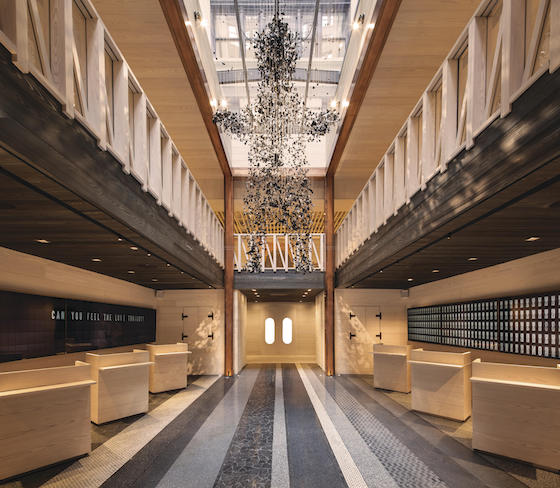
The other challenge, Yabu says, was attracting people who appreciated the value but really checked in to hang out with their tribe in the ample public spaces. Those spaces include a lobby where a three-story atrium skylight, flexible seating and communal tables allow co-working by day, lounging by evening and clubbing by night. A mobile shaped like a bear hovers over all.
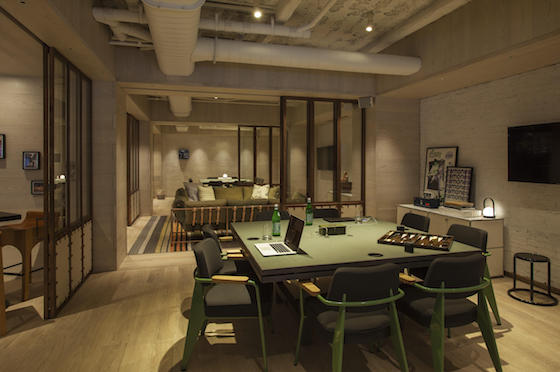
Luring guests out of their rooms involves a “differentiated collection of F&B experiences” that would appeal to them and to the thousands walking through the neighborhood, says Shawn Sullivan, partner and studio leader at New York-based Rockwell Group, which designed three of them: Egghead, a sidewalk-side grab-and-go space with an egg-centric menu; Legasea, a second-floor full-service “seafood brasserie”; and Magic Hour, a 10,000-square-foot, indoor-outdoor rooftop bar with an adult amusement park theme and Empire State views that’s purported to be the biggest in that very big city. The spaces aim to appeal to evening, late-night and late-late crowds that morph into hungry all-night revelers looking for breakfast.
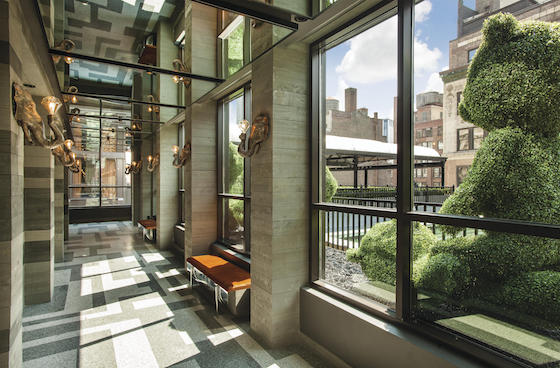
Guests and visitors
Each space has advantages and challenges inherent to designing for an existing building. Egghead sits next to an entrance to the rooftop. “If you’re leaving the rooftop late at night, it’s a great alternative to what usually people get – a slice of pizza on the way home,” Sullivan says. But the small space lacks fixed seating. “It’s all about perching and standing, or taking away. So we designed it thinking about how you could find great seats without actually sitting down,” he says. That included standing tables; kinetic light fixtures contain condiments. “It’s almost a submarine-like solution to space,” he says.
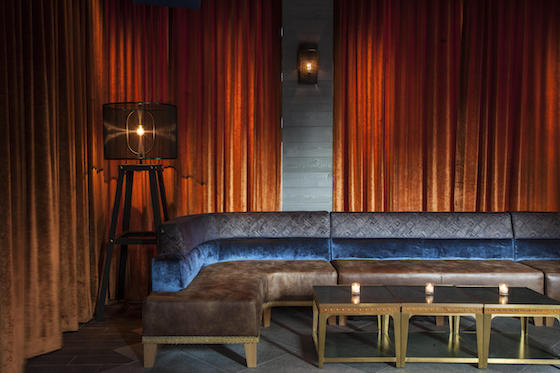
Legasea has expansive views, but its second-floor space has low ceilings. So along with a ceiling design is a bar centered on skylights with antique mirrored panels that give a more spacious perception. The rooftop comprises an interior lounge and three outdoor spaces with a retractable, barrel-vaulted fabric roof. While hotel guests use an interior elevator to access the rooftop, nonguests approach via an alley leading to marquee lights and an elevator straight up.
“Do you want to go to a hotel that is just for the people who are staying at the hotel, or do you want to go somewhere that has a lot of atmosphere which is a destination in the city and you just happen to have privileged access because you’re staying in the building?” Sullivan asks. “The Moxy really is meant to be social. We get everyone out of the guest rooms and we get them to play and hang out together, and we invite the neighborhood in.”
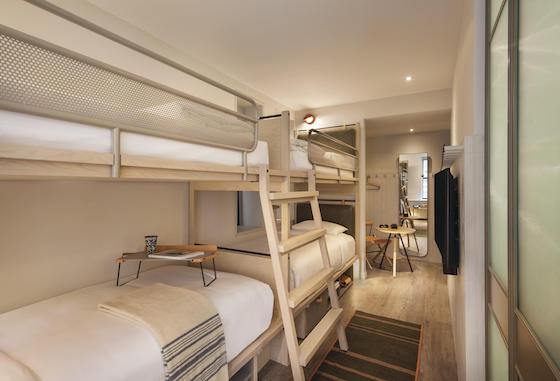
Hang it up
Back in the guest rooms, overcoming the space challenge meant designing furniture that could fold and hang from a peg. Instead of backs, chairs have lumbar supports that protect walls, with designs clever enough that the firm is considering retail sales. The rooms leverage the nostalgia of a dormitory (“take the private out of private school,” Yabu says) with phones that mimic rotary-style and “No Diving” spelled out in tile in the narrow bathrooms.
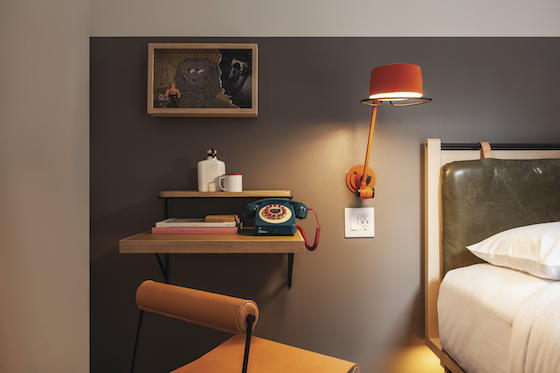
What’s not spelled out: references to the location. “We didn’t really tie it to New York, but we did want you to know that you were in one of the greatest cities in the world,” Yabu says. “It also had to transfer to other cities and not make it hard for the brand to do that.”
While the view won’t be replicated, perhaps the potted plants will. The rooftop is populated by cheeky topiaries in suggestive poses – “you have to laugh when you see them,” Hochberg says. “I think it’s a little bit what Moxy’s all about,” he adds. “We’re trying to be a little irreverent. We’re trying to be fun. We’re trying not to take ourselves too seriously, and we’re trying to make people feel that they’re comfortable there.”
